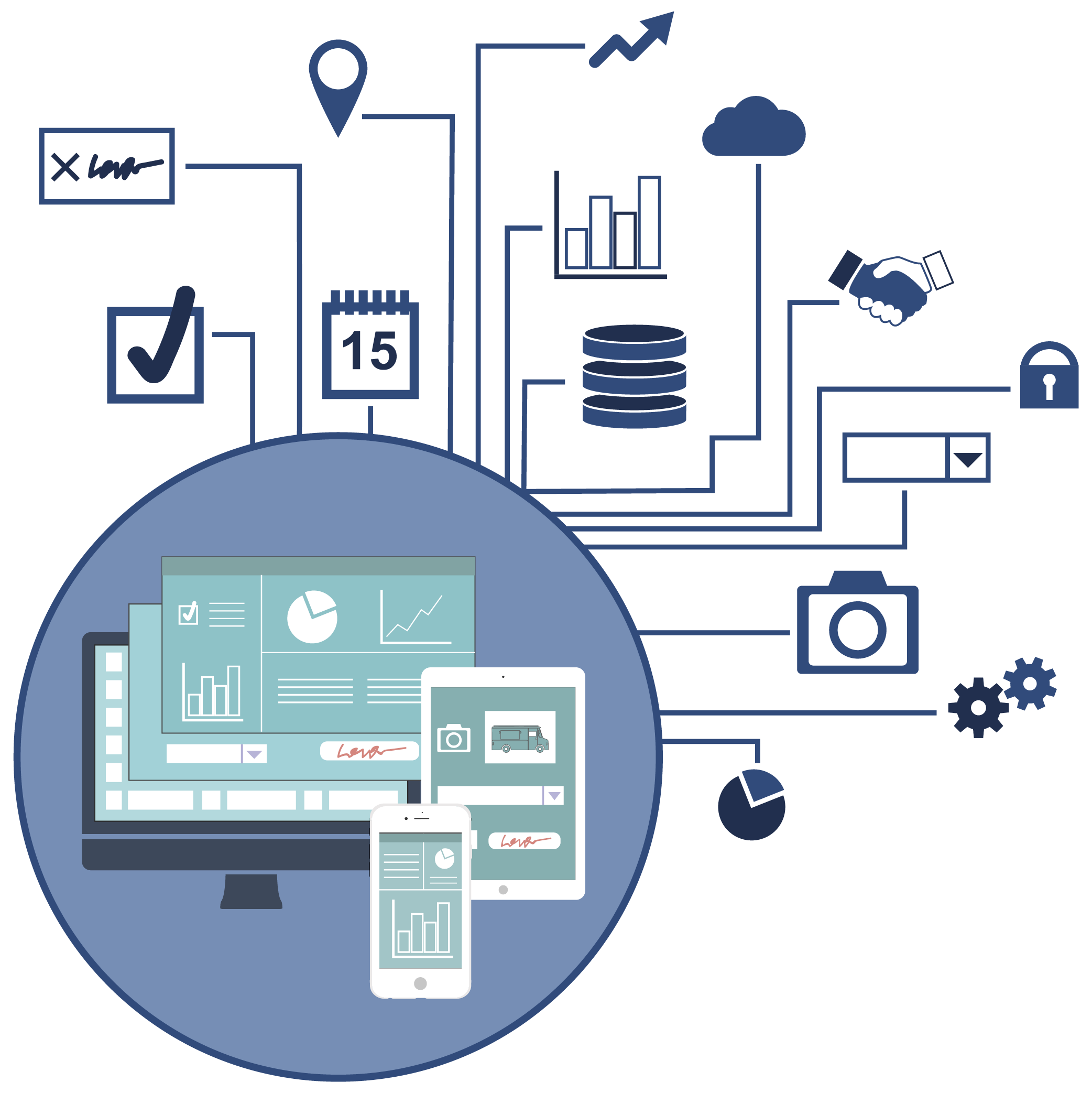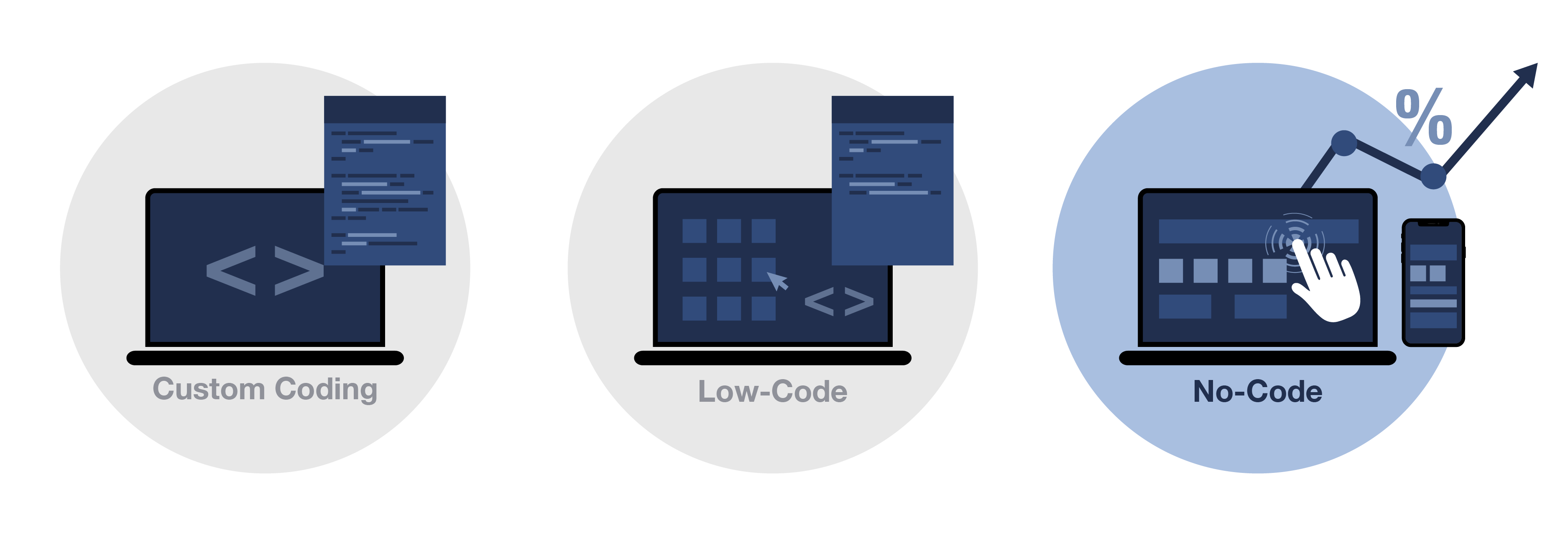How to Build Mobile Applications in the Enterprise, Faster and Smarter

Learn about an effective approach for building mobile applications, and the key features that truly allow for deeper functionality and faster delivery. Your business can:
- Achieve real-time insight into daily operations
- Meet the growing demand for mobile apps by field staff
- Reduce IT costs while ensuring data security and integrity
- Plus more
Mobile applications can help employees execute mission critical business processes from anywhere, provide real-time insight into daily operations, and transform businesses into productive, well-oiled machines. But most organizations still don’t have the right tools to develop mobile applications efficiently. Internal mobile application development projects often run over time and over budget, or don’t get off the ground at all.
Functionally rich, mobile forms-based business applications can be built without the high costs and delays of coding. These information systems can allow users to easily complete their business processes on mobile devices, while supporting complex data structures, logic, security, integration, workflow, and role-based requirements on the back end. A no-code approach lets both seasoned developers and line of business (LOB) analysts develop their own applications quickly, for faster delivery in the enterprise.

Mobile technology has changed the way we live and work, with 77% of the U.S. population now owning a smartphone and over 50% owning a tablet1. This has fundamentally shifted the ways employees approach work and enterprises approach IT initiatives.
More and more companies have turned to mobile applications to support internal processes and stay ahead of competition. Mobile applications originally gained popularity by allowing employees to stay connected at all times, but are now often being used to execute mission critical business processes.
77% of the U.S. population now owning a smartphone and over 50% owning a tablet.
With various types of mobile application development approaches available, the debate continues. What is the fastest, easiest, and most cost-effective approach for building mobile applications? Let's compare 3 popular approaches:
Custom coding requires building applications from scratch. This can provide unique, one-of-a-kind information systems, but since it requires the technical expertise of professional developers, custom coding can get expensive and require too much time to build and maintain. Some businesses also might not truly need a custom solution.
Low-code application building uses visual tools for building part of an application, supplemented with some coding and database knowledge to handle more advanced requirements and connect to an existing data source. They are intended to encourage LOB analysts to become 'citizen developers.' However, low-code strategies may still require technical expertise for any functionality that goes beyond basic features, putting them out of reach for people without coding skills and adding to the total cost of ownership.
No-code application building is the only approach that truly requires no coding. Advanced products of this type recognize the complex data structures and workflow necessities of business applications. As with low-code tools, this approach makes it accessible to both professional developers and non-technical staff, but takes it a big step further by providing all the elements necessary to build complete applications without code. This approach combines a user-friendly application building interface for power users, integration and security features for IT staff, and deep functionality to reflect unique business processes for the enterprise.
1 http://www.pewresearch.org/fact-tank/2017/01/12/evolution-of-technology/
The Problem
"How can I deliver maximum value to my organization keeping pace with demand for mobile business process applications, with systems that are cost effective to deploy and maintain while ensuring data security and integrity?"
The demand for mobility in business process applications is dramatically increasing. IT staff cannot build them fast enough with the tools currently in place, and non-technical staff do not have the expertise to use tools that require coding. Organizations need application development software that allows them to best leverage skills in IT and line of business departments to quickly build highly functional forms-based applications that automatically work across desktops and mobile devices.
Mobile Applications Development Success Criteria
Mobile applications are corporate information systems in their own right, and should be built to last. Regardless of constraints on resources and budgets, they need to be robust, reliable, maintainable, and able to adapt to changing business requirements. Here are some factors to consider in choosing a mobile applications platform:
Application Building
Any amount of coding demands the time and expertise of a professional developer. For an efficient and hassle-free approach, applications should be assembled using a point-and-click strategy and saved as metadata configuration files, instead of code. With this approach, the iOS and Android offline apps, desktop web apps, and backend database are all generated automatically from the single declarative definition. Having the server and client-side code bases centrally maintained by the vendor can also provide significant time savings and less QA effort.
Version Control Administration
Approving and keeping track of application changes from dozens of team members can be time-consuming, and missed changes can have significant impact. A solution that allows application development and maintenance to be tested using the 'sandbox' approach makes management processes more thorough, efficient, and straightforward. Ehanced version control displays precisely what and when revisions were made, and by whom. It also provides easier comparisons of each application version to view changes before publishing, or restores prior versions if necessary. Application definitions can be easily copied, archived, or shared.
Full Workflow Features
Business processes take extensive time and resources to conceptualize, and shouldn’t be compromised because of the limitations of a mobile platform. A full workflow solution may require specific features including conditional email notifications, mandatory fields, and custom validation rules to improve data quality and collaboration between field and office staff. A tool with these features as well as nested data structures, reference table look-ups, audio recordings, photo annotations, and more advanced features can truly reflect unique business process and workflow requirements.
Organizations need application development software that allows them to best leverage skills in IT and line of business departments to quickly build highly functional forms-based applications that automatically work across desktops and mobile devices.
Deployment
The more choices, the better. This is especially true when it comes to deployment options. Multi-tenant cloud and private cloud allow information systems to be implemented promptly, without requiring the business to manage the hardware or software itself. Onpremises deployment allows direct control of application availability and data security. Mobile application development software that offers a variety of deployment options provides flexibility for long-term scalability needs.
Integration
Organizations have different applications and systems that serve different purposes, resulting in multiple systems needing to be integrated. These can include existing back-end systems such as ERP, CRM or data warehouses. Integration efforts alone can account for a large portion of project costs when developing mobile applications either internally or outsourced. Solutions that connect to a dedicated central database and provide extensive integration features through open APIs can reduce the cost and complexity of the integration process, and provide secure real-time mobile access to corporate data.
Access Control
Similar to corporate networks, enterprise mobile applications are typically not open to the public. The requirements for this include but go beyond user authentication and password management. App functionality and data access authorization should be customizable down to the role or user level. Solutions that enable role-based permissions and segregated user groups contribute to higher control of access to department-specific applications and confidential data. Approaches that control production database access, and use reverse proxy technology to manage corporate network access further enhance data security and integrity.
Return on Investment
There are two ways to generate a return on investment from mobile business process applications. First, implement them quickly. There are many projects on the shelf because the organization doesn't have time and resources to devote to them. However, there are business analysts in the lines of business and in the IT department itself who have the skills to build applications with the right tools. Choosing an approach and tool that can handle the most application functionality with the least code will lower the total cost of ownership, and maximize the ROI.
Second, implement them smartly. The ROI available to an organization from streamlining and automating the work of mobile employees is huge. There are opportunities for improving efficiency, customer satisfaction, and compliance because benefits extend beyond replacing paper forms with simple data collection or data viewing apps. An approach and tool that can implement the entire business process will let organizations achieve an even stronger ROI.
WHY CHOOSE FLOWFINITY?
Flowfinity is flexible software for building mobile business process applications faster and smarter, without having to code. Using this declarative approach, it takes less time and fewer IT resources to create mission critical business process applications from end-to-end. The iOS and Android offline apps, desktop web apps, and backend database are generated automatically from the single declarative definition.
Flowfinity meets the complex security, integration, access control, and configurability requirements of mobile applications while providing the speed of point-and-click app creation. As Flowfinity is suitable for use by IT professionals, business analysts and citizen developers, it delivers organizations a secure and reliable way to meet the increasing demand for mobile applications in the enterprise.
